New CR-V seeks old CR-V’s top spot
By John Gilbert
Honda got quite comfortable when its CR-V became the largest-selling sport-utility vehicle in the industry in 2007 and held that position until 2011. Only production losses caused by the tragic earthquake and tsunami that hit Japan dropped the CR-V behind the Ford Escape as the top-selling SUV, but just over a year later, Honda is back up to speed and projecting the new fourth generation CR-V will return the compact SUV to its position of prominence.
The new CR-V takes a new styling direction, replacing the third-generation’s symmetric-arc silhouette with a more sophisticated sleekness, and displaying Honda’s amazing packaging skills that offer more interior room and a more spacious feel even while the new vehicle is almost an inch shorter than its predecessor.
If anything, the new CR-V mostly resembles the new-generation Ford Escape, which is also just being introduced and should put both vehicles into an interesting position to continue their duel at the top. It used to be that their competition would be for only the compact crossover (CUV) segment, but with economic and fuel-efficiency issues becoming top priority, and dropping large and even midsize SUVs in popularity, the CUVs are rising fast enough to become the hottest sellers in the industry.
Honda doesn’t hesitate to claim its young-family oriented compact crossover is aimed to appeal to women, who make over half of the decisions on vehicle purchases. Evidence includes a dashboard that is extended on both sides for a more spacious look; making the center console large enough to conceal a purse; offering ambient lighting around the instruments that changes from white to a subtle green as you drive more economically.
Connectivity is another improvement for the new CR-V, which accommodates whatever electronic gadgetry you might have — except for iPhones, curiously, while Blackberrys are no problem. You can use voice commands to text while driving, because when you receive a text message, the i-MID (intelligent multi-information display) will read it aloud to you, and your brief response will be relayed back. The i-MID screen can even be set to display favorite photos for further personalization.
Functionally, the CR-V rides atop an all-new all-wheel drive system, doing away with the separate rear hub that used to send power to the rear whenever the front wheels spun. The new system uses an electronic control to more quickly transfer torque from front to rear axles, and provide a portion of power to the rear for climbing hills and for start-up traction, because a natural rearward weight transfer in both circumstances require more power from the rear. When cruising, the rear power disengages, but up to 100-percent of torque could go to the rear when the front slips.
This has been a weird winter in the Upper Midwest, with March being very June-like, and April being more like a normal March, but the best feature of any all-wheel-drive system is its ability to handle a sudden snowstorm, and the new AWD system on the CR-V made short work of the worst winter could throw down on the North Shore of Lake Superior.
While shorter by 0.8-inches, the CR-V is an inch taller and has expanded interior room. A lower hip point in rear seating also enhances interior space. The body itself is made 7 percent stiffer in bending rigidity and 9 percent in torsional rigidity, helping the suspension improve responsiveness by 40 percent. Quietness is enhanced by more insulation and sound-absorbing materials, and the lower cargo floor, with side restraining nets, increases cargo volume from 35.7 to 37.2 cubic feet with the rear seat folded down.
Under the hood, Honda’s familiar 2.4-liter 4-cylinder engine has dual overhead camshafts and i-VTEC variable valve timing, and is hooked up to the smooth but aged 5-speed automatic transmission. Horsepower increases by 5, to 185 (at 7,000 RPMs), with 163 foot-pounds of torque (at 4,300 RPMs), and power feels fully adequate. EPA fuel economy estimates are 23 city/31 highway for the FWD models, and 22/30 for AWD, which is available as an option on all models. Competitors such as the Hyundai Tucson, Kia Sportage, and just-introduced Mazda CX-5 and Ford Escape offer 6-speed automatics to insure better ratios for fewer highway revs and improved fuel economy, and the CX-5 and Escape both offer 6-speed manual as well as 6-speed automatic transmissions. Some can attain better fuel economy in real-world driving than Honda gets on EPA estimates, indicating either the competitors caught Honda in a complacent snooze, or Honda has become more dependent on market research than progressive technology.
The first CR-V was a 1997 model, an interesting attempt at all-wheel-drive compact utility vehicle that sold well for its uncompromising utility, and had a strong rival in the similarly aimed Toyota RAV4. The CR-V’s second generation came for 2002 when its boxy shape was rounded off into a more refined body. The third generation in 2007 was pivotal, as Honda and Toyota went separate ways. Toyota introduced its new RAV4, lengthened by 14 inches and offering both a third-row seat and a V6 engine option. Toyota said it was abandoning the personal-runabout rivalry in response to market research, which indicated U.S. customers asked for more room and more power.
Honda was more guided by technology in those days, and made the 2007 CR-V more compact by removing the spare tire from the rear, while staying with two rows of seats and only its 4-cylinder engine with its 5-speed automatic. It left any critics — as well as the RAV4 — behind, becoming the largest-selling SUV of all. That third-generation model’s considerable change in appearance took on a half-circle silhouette rising from the windshield and tapering off to the rear deck. It continued to combine size, performance, versatile packaging, coupled with with a high standard of build quality, to remain No. 1 in sales through 2010.
When the earthquake and ensuing tsunami struck Japan in March of 2011, Honda’s facilities and supply of parts hampered numerous Honda products, and hurt CR-V availability enough that many compact crossover customers looked for alternatives, enough choosing the Escape to boost it past the CR-V in sales.
The marketplace will decide on their new-generation duel, but Ford’s newly stylish Escape has a trio of 4-cylinder engines, including two EcoBoost turbocharged models, a new 1.6-liter and a 2.0-liter, joining the reliable 2.5-liter. The CR-V stays with the once-dominant 2.4-liter 4, although it has dual overhad camshafts and iVVT variable valve timing for power. Honda also clings to its 5-speed automatic transmission, which is smooth and feels adequate, although the Escape, Hyundai Tucson, Kia Sportage, Kia Sorento, and just-introduced Mazda CX-5 all offer 6-speed transmissions for improved fuel economy, and the Escape and CX-5 both offer 6-speed manuals as well. Honda officials defend the 5-speed, claiming altered gear ratios to allow better acceleration.
The CR-V lineup starts with the LX model, equipped with front-wheel drive, air conditioning, cruise control, Bluetooth HandsFreeLink, i-MID, remote entry, a 160-watt 4-speaker audio system, Motion-Adaptive Electric Power Steering (EPS), for $22,495; the same vehicle with all-wheel drive starts at $23,745.
The EX model adds an upgraded six-speaker audio system, power moonroof, 17-inch alloy wheels and more, at $24,595 for front-drive, and $25,845 to add Honda’s Real-Time AWD system.
The top of the line EX-L adds leather-trimmed interior, 10-way power driver’s seat, automatic dual-zone climate control, 360-watt 7-speaker audio system with XM Radio to the EX’s features. The EX-L include the Honda Satellite-Linked Navigation System with Voice Recognition and FM Traffic, or a DVD Rear Entertainment System, at base prices that vary from $27,945 for FWD to $28,495 for AWD. The EX-L has unique availability of a rear-seat DVD player.
Without question, the fourth generation CR-V is the best so far. The question is whether it has improved enough in the face of ferocious competition.
Comments
Tell me what you're thinking...
and oh, if you want a pic to show with your comment, go get a gravatar!


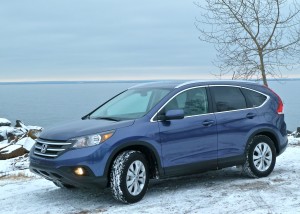
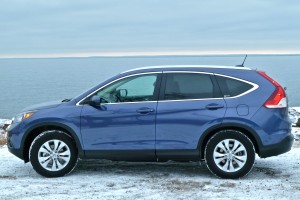
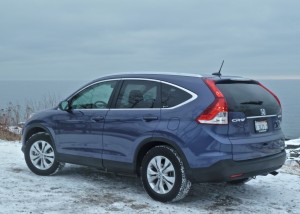
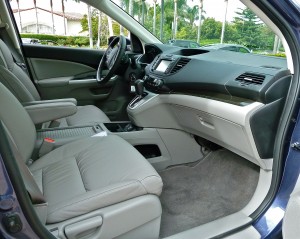
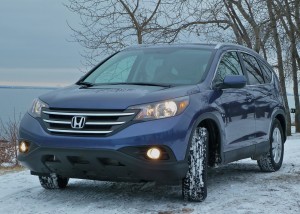
 John Gilbert is a lifetime Minnesotan and career journalist, specializing in cars and sports during and since spending 30 years at the Minneapolis Tribune, now the Star Tribune. More recently, he has continued translating the high-tech world of autos and sharing his passionate insights as a freelance writer/photographer/broadcaster. A member of the prestigious North American Car and Truck of the Year jury since 1993. John can be heard Monday-Friday from 9-11am on 610 KDAL(www.kdal610.com) on the "John Gilbert Show," and writes a column in the Duluth Reader.
John Gilbert is a lifetime Minnesotan and career journalist, specializing in cars and sports during and since spending 30 years at the Minneapolis Tribune, now the Star Tribune. More recently, he has continued translating the high-tech world of autos and sharing his passionate insights as a freelance writer/photographer/broadcaster. A member of the prestigious North American Car and Truck of the Year jury since 1993. John can be heard Monday-Friday from 9-11am on 610 KDAL(www.kdal610.com) on the "John Gilbert Show," and writes a column in the Duluth Reader.